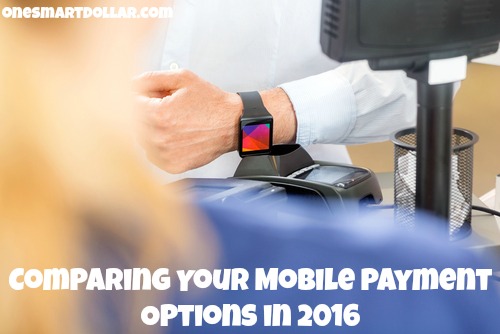
In 2014, 22 percent of smartphone owners had made a mobile payment in the last year, an increase from 17 percent in 2013, according to Federal Reserve data. Visa anticipates that mobile payments will be the preferred method of payment for both merchants and consumers by 2020. As demand for mobile grows, the number of mobile payment services available is also increasing. Here is a look at some of today’s top mobile payment options.
Samsung Pay
PCMag rates Samsung Pay as the best mobile pay option on the market for those who have compatible phones. Samsung Pay is currently compatible with the Samsung Galaxy S6, S6 Edge and Note5. It also will work with forthcoming Samsung Gear smartwatches.
Samsung Pay is accepted at more locations than competitors due to its versatility. It is equally compatible with magnetic card swipe readers, chip readers and NFC readers. For magnetic swipes, it uses an embedded magnetic strip to send a signal that makes the card reader behave as if you swiped your card. The only places it doesn’t work are locations requiring a physical card insertion, such as gas stations and ATMs. Credit card numbers are not stored on the phone and transactions are protected by tokenization, encryption and two-factor authentication, so users’ financial information is secure.
Apple Pay
An increasingly popular mobile payment option is Apple Pay, which works with the iPhone 6, 6s, iPad Pro, iPad Air, iPad Mini and Apple Watch.
Supported by most major debit and credit card providers and over 300 banks, Apple Pay is accepted by a growing number of retailers, including McDonald’s, Subway and Walgreens. Apple Pay enables NFC tap-to-pay as well as in-app purchases, authorized by pressing your Touch ID button. Credit card numbers are not stored on the phone or received by merchants. Apple Pay’s main disadvantages to Samsung Pay are incompatibility with non-NFC terminals and limited range of retailer acceptance.
Android Pay
Android Pay is a popular alternative to Apple Pay for Android users. Android Pay works with any Android phone that is NFC-enabled with Host Card Emulation (HCE) support and runs KitKat 4.4 or higher.
Android Pay is compatible with most major U.S. credit and debit cards and banks, and it is supported by over one million retailers, including McDonald’s, Macy’s and Jewel-Osco. It allows for NFC purchases along with in-app purchases from select retailers. It does not send merchants credit card numbers but rather uses tokenization to protect your number. However, Android Pay uses a less secure technology than its competitors, HCE, to emulate the behavior of contactless smart cards. Android Pay does not use fingerprint authentication for purchases, but it does authorize tap payments with passcodes.
Google Wallet
Android Pay is an upgrade of Google Wallet. Google Wallet previously had NFC payment capability, which is now reserved for Android Pay. Google Wallet is now primarily used to transfer money electronically using Android phones and tablets running Android 4.0 or higher and iOS devices using iOS 7.0 or above. Google Wallet also can use money in your account for point-of-sale purchases and ATM withdrawals when used in conjunction with a physical Google Wallet card.
CurrentC
CurrentC is a new mobile payment option currently in beta test in Columbus, Ohio. It is being developed as an alternative to Apple Pay by Merchant Customer Exchange (MCX), a consortium of U.S. retailers that includes Walmart, Target, Sears, 7-Eleven and CVS Health. It will enable payments via QR code scanning rather than NFC.
PayPal
Mobile payment pioneer PayPal, a company that has been long resistant to NFC, has recently begun moving into the field. In 2013, PayPal’s parent company eBay acquired Venmo, a mobile payment app that enables money transfers. In 2015, while spinning off from eBay, PayPal acquired Paydiant, which had previously helped MCX develop CurrentC. In NFC World, PayPal president Dan Schulman described these steps as working toward a platform that will combine NFC, HCE, QR code and Bluetooth payment options.
International Payments via App
Most of the money transfer apps specialize at same-currency transfers. Some, like ApplePay or Square don’t even allow cross border payments, while some like Paypal, take extreme fees off of such transfers.
The alternatives can be seen here: companies that specialize at cross border payments which also have sophisticated apps that enable clients to send money abroad on the fly.
